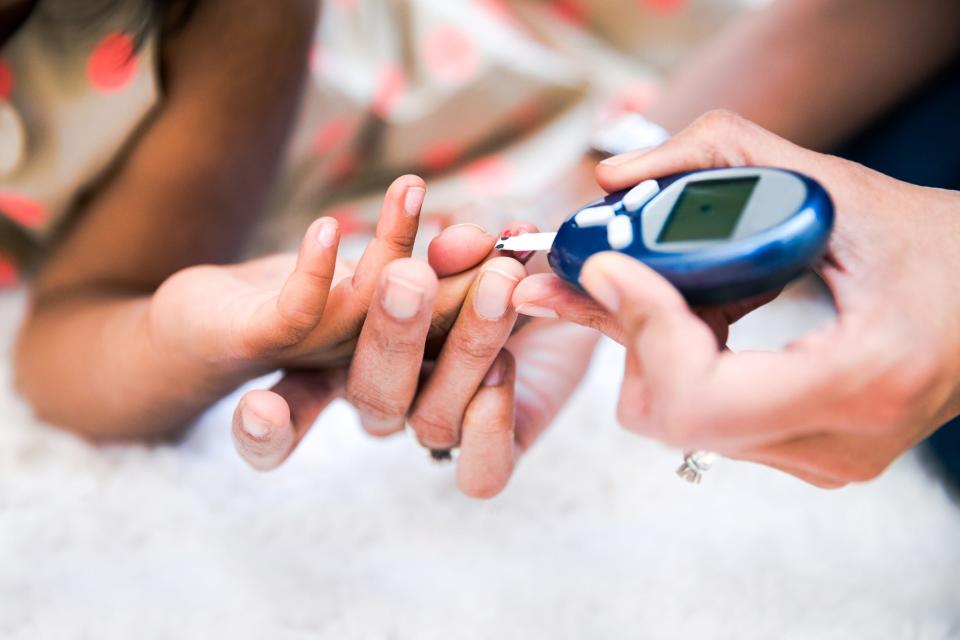Diabetes treatment can be incredibly costly. But the biggest cost is (surprisingly) not insulin
Millions of Americans with diabetes have cheered as drugmakers slashed the price of insulin, the lifesaving medication that treats the chronic disease.
But those lower prices, which came amid government pressure to cap insulin costs and more competition from generics and biosimilars, are only one part of the cost of treating the disease, which causes elevated blood sugar that can damage the heart, eyes and kidneys if untreated.
Over-the-counter medical supplies to monitor glucose levels and administer medications can make up the largest portion of a patient’s costs. A 2020 JAMA Internal Medicine report found that children and adults with private health insurance spent more out-of-pocket on diabetes-related supplies than on insulin.
“We’re glad insulin prices are capped, and people are paying more attention, but that only really tells part of the story of people living with diabetes,” said Dr. Karla Robinson, medical editor at GoodRx, a platform that helps people find the lowest prescription prices near them.
The cost of supplies “impacts people much more so than ... insulin. It can affect what treatment they even opt for because supplies can be very expensive.”
Lowering insulin prices: Capping the cost of insulin
How many people are affected by supply costs?
Of the 37 million Americans who have diabetes, about 8 million use insulin but all must monitor their sugar levels. Add to that another 100 million pre-diabetic adults who may need test supplies.
There are two types of diabetes:
Type 1, which is completely insulin-dependent.
Type 2, which may or may not need insulin because you can take oral medications or make a lifestyle and diet change to control it.
"One thing both have in common is they all need to monitor their sugar in some ways,” Robinson said. “Many people are affected who don’t ever require insulin, so this is a huge issue.”
Changing the outlook: FDA approves first treatment that delays Type 1 diabetes. Why it could be 'game changing'
Growing numbers: Diabetes rates among young people in the US are on the rise. Here’s why.

How much can supplies cost?
A person with diabetes who uses insulin typically spends $4,882 a year on treatment if they have insurance. Of that, $3,992 is spent on supplies, according to an analysis by GoodRx, or more than 80% of the annual expense of managing the disease
Lowering costs: Drugmaker Novo Nordisk to slash some insulin prices by 75%
Lifestyle changes: People with diabetes lived longer on lower carb and plant-based diet, study finds
What kinds of supplies do people with diabetes need?
It can vary depending on what type of diabetes you have, but here are some common items:
Blood glucose meter (glucometer): A small, handheld device that uses a tiny drop of blood from a finger and gives glucose results in just a few seconds.
Continuous glucose monitor (CGM): A wearable glucose monitoring device with a sensor that sits under the skin and measures glucose 24 hours a day.
Insulin pump: An automated insulin delivery (AID) device, often used with a CGM, that responds to glucose changes.
Lancing devices and lancets: Used to prick fingers to check sugar levels.
Blood glucose test strips: Used in a glucose meter.
Syringes and alcohol prep pads: Used to inject insulin.
Insulin pens: A portable and convenient alternative to vials and syringes to deliver insulin.
Adhesive skin patches; Used with CGMs.
Infusion sets: A connection between the insulin pump delivery device and your body.
Budgeting: More than 1.3M Americans ration life-saving insulin due to cost. That's 'very worrisome' to doctors.
Diabetes and weight loss: Diabetes drug helps patients lose never-before-seen amounts of weight, study shows
How can people cut the cost of diabetes supplies?
You can ask your physician for samples or suggestions, but here are various forms of help you might tap:
BenefitsCheckUp.org: Seniors with limited incomes can search by ZIP code for help with medicines, health care and other needs through this service of the National Council on Aging.
NeedyMeds.org: A national organization connecting people with programs that help pay for medicines and supplies. You can search by medicine or manufacturer name.
Partnership for Prescription Assistance: Helps people who don’t have insurance coverage for prescriptions find their medicines and supplies free or at low cost.
Patient Advocate Foundation: A nonprofit with a directory of organizations by state that specifically help patients cover the costs of diabetes care. Choose “diabetes” as your diagnosis on the website to search for assistance. The foundation also has a copay relief program for those in financial distress who have insurance. Low-income diabetes patients may access grants up to $1,500 a year for medical costs.
Federally qualified health centers: Community health centers may offer free or reduced-cost diabetes supplies.
Rx Outreach: A nonprofit, mail-order pharmacy that provides affordable medicine to people in need through its website or by phone at 1-888-RX0-1234 (1-888-796-1234).
RxAssist.org: A list of drug company assistance programs, state programs, discount drug cards, copay help and more.
Patient Assistance Programs: Companies often offer free or low-cost diabetes supplies, depending on your insurance status and income. If you need assistance with your pump supplies or CGM, directly contact the manufacturer via their customer service number:
Medtronic: 1-800-646-4633
Tandem: 1-877-801-6901, option 3
Insulet: 1-800-591-3455
Dexcom at 1-888-738-3646
Abbott Diabetes Care: 1-855-632-8658
Available resources are “helpful to know, but I hope on a grander scale, we can get some legislative relief that’s more comprehensive,” Robinson said. "People ration supplies and reuse single use supplies, which compromises safety. Just as we have now finally gotten some relief for insulin, I hope for some relief for supplies.”
Medora Lee is a money, markets, and personal finance reporter at USA TODAY. You can reach her at mjlee@usatoday.com and subscribe to our free Daily Money newsletter for personal finance tips and business news every Monday through Friday morning.
This article originally appeared on USA TODAY: Insulin cost not the biggest expense for Diabetes patients. What is?

